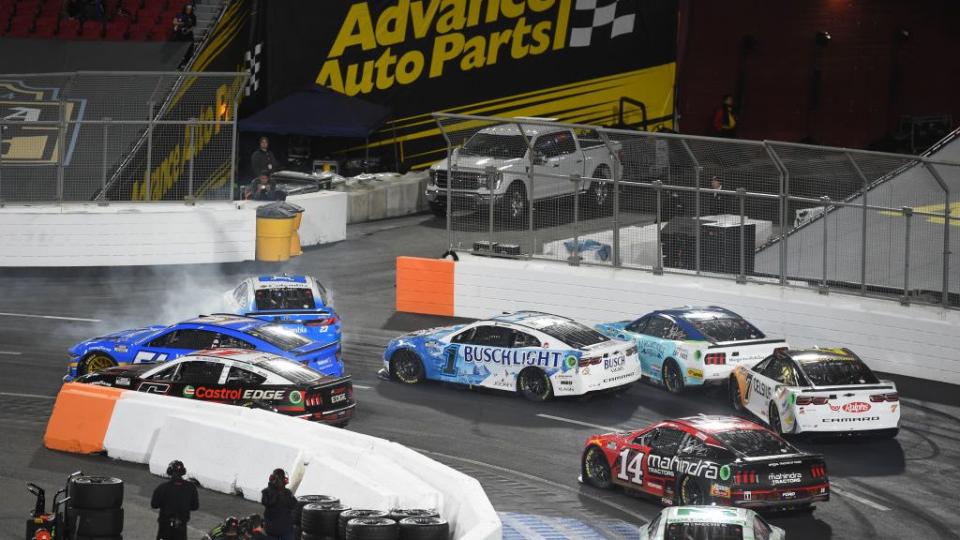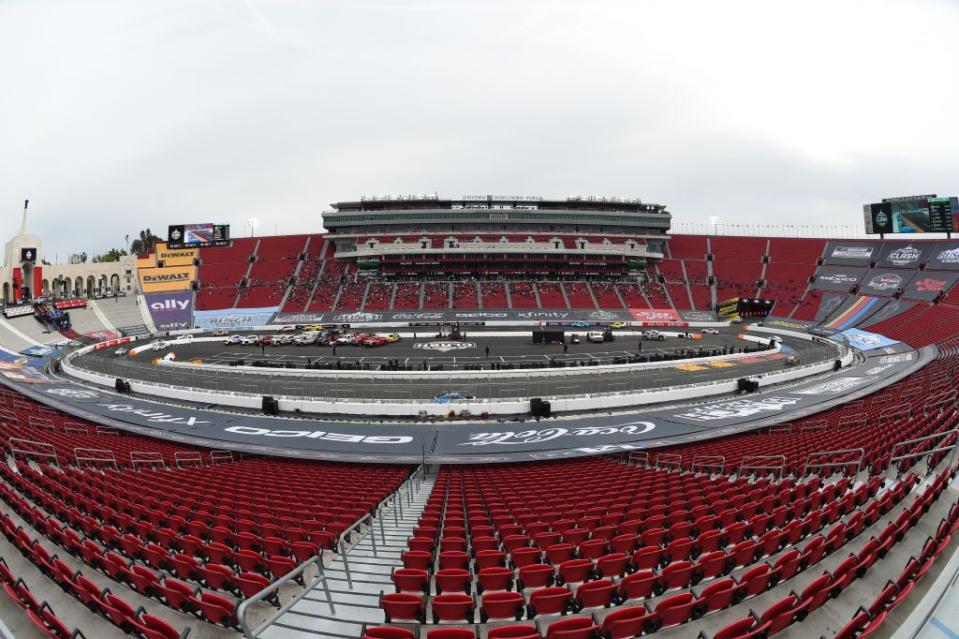Three Is Enough: Time for NASCAR to Move on From Its L.A. Coliseum Experiment

With a dangerous storm expected to dump as many as three to five inches of rain on Los Angeles from Sunday into Tuesday morning, NASCAR’s unprecedented decision to move the Busch Light Clash up a day was the right move, but it’s time to end its three-year stint in the historic Coliseum.
NASCAR has achieved its objective and now it needs to tap another area in its effort to increase its fan base. Even though NASCAR has yet to announce the 2025 Busch Light Clash’s location, rumors already abound as to where it might move.
One rumor has it going to Mexico, but wherever NASCAR decides the non-points race will be, weather will be a determining factor. If NASCAR keeps the event in early February, two weeks prior to the season-opening Daytona 500, it’s severely limited in where it can take it. However, with NASCAR successfully turning the L.A. Coliseum into a quarter-mile race track, it has shown it can transform any venue into a racing facility.
NASCAR wanted to tap the No. 2 market’s urban area for new fans, and it actually achieved that objective in its first year at the Coliseum. In 2022, 70 percent of those who purchased tickets had never seen a NASCAR race.

Attendance at the Coliseum waned in 2023 and this year. The Orange County Register reported that for weeks drivers promoted discount codes for tickets on their social media accounts and a marketing team handed out leaflets about the Clash across L.A.
Ben Kennedy, NASCAR’s senior vice president of racing development and strategy and NASCAR founder Bill France Sr.’s great grandson, told the newspaper the different marketing strategy was “simply new sales tactics in an aggressive market.”
Kennedy described the third-year ticket sales trend as similar to the second—some returning customers and some new ones. Overall, the special event reached a new demographic and that was NASCAR’s objective.
This year, NASCAR initially didn’t plan to open the Coliseum on Saturday for practice, the heat and last chance qualifying races. The backlash from fans resulted in NASCAR saying Saturday’s admittance would be free. That didn’t change when the race was moved up to Saturday due to the atmospheric river headed towards L.A.
Chase Elliott called NASCAR’s decision to move the race up a day “one of the most logical decisions we’ve made as an industry, potentially ever.” Despite it being the right decision, in all probability it cost NASCAR severely in ticket sales and TV ratings since the telecast was moved from Fox to FS1.
In the 1980s when corporate America began using NASCAR as a marketing tool, those responsible for obtaining sponsorships viewed a sponsor as a three-year deal. At that time the summer and winter Olympics were in the same year, and the teams made sure their sponsorships didn’t expire in an Olympic year since advertising dollars for other projects were scarce.
Today, I think it’s fair to say that a three-year run still pertains to new experiments in racing. The dirt track at Bristol was used for three years. The newness, the uniqueness wore off and now it’s gone. The Busch Light Clash at the Coliseum has had its three-year run, and now it’s time to move it to a new venue.

 Yahoo Autos
Yahoo Autos 